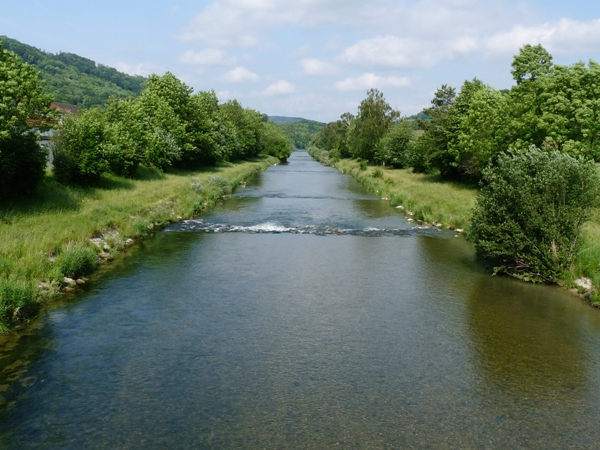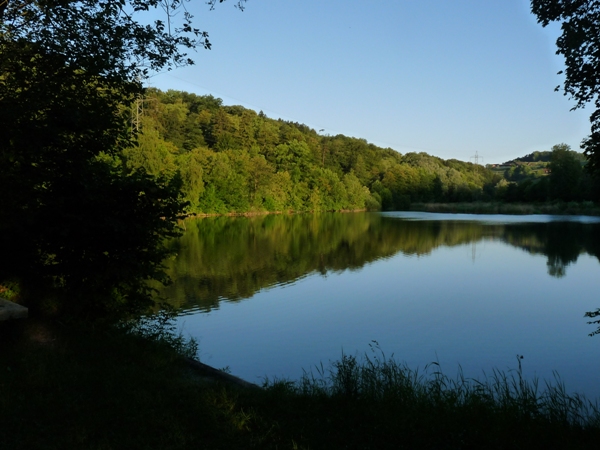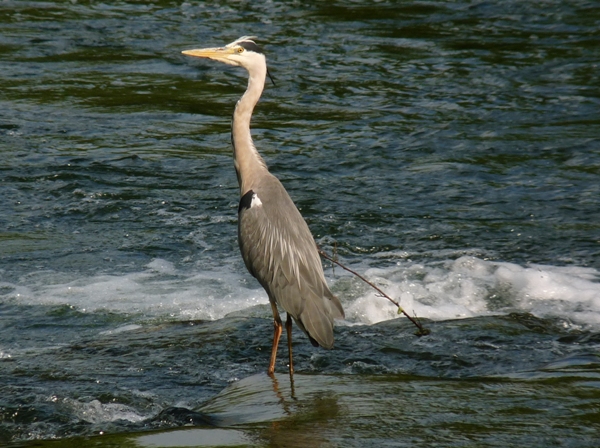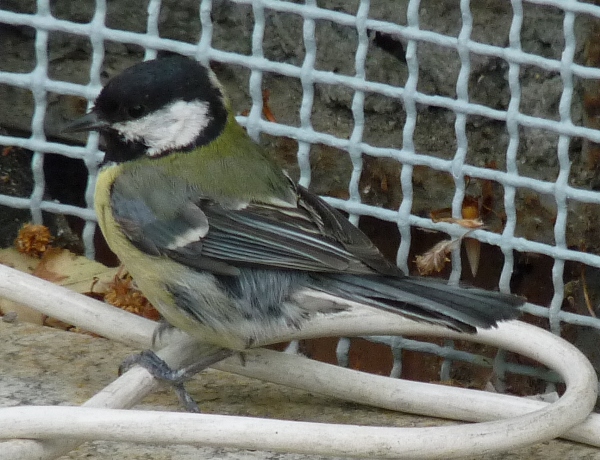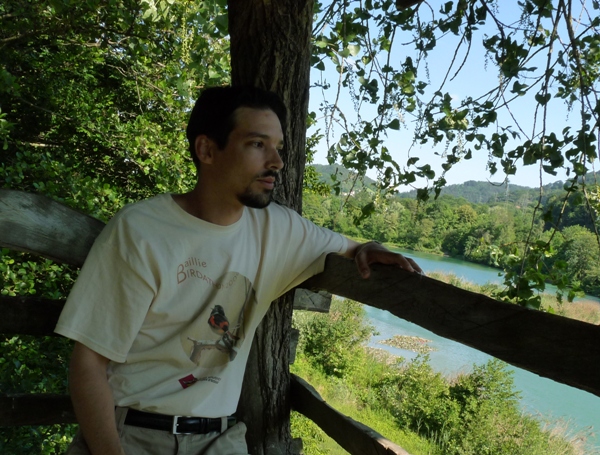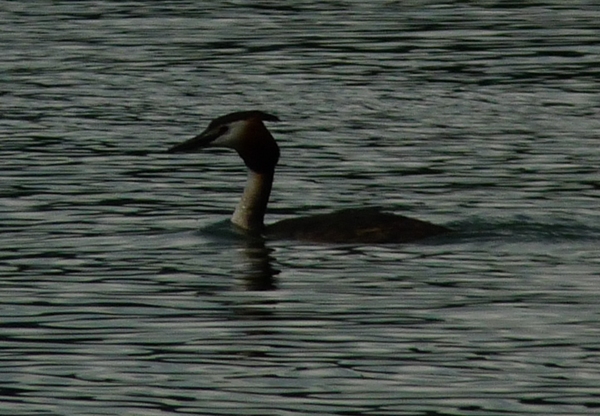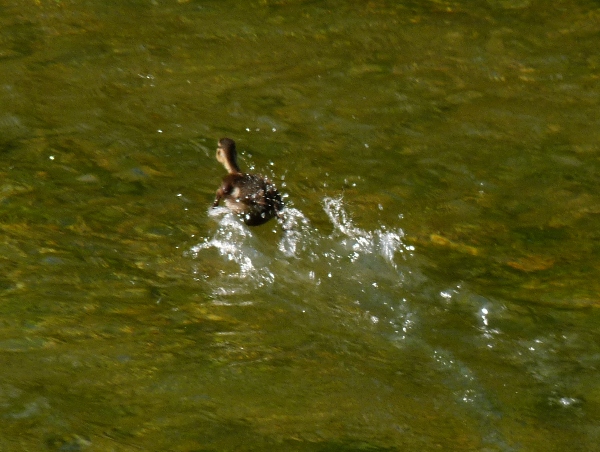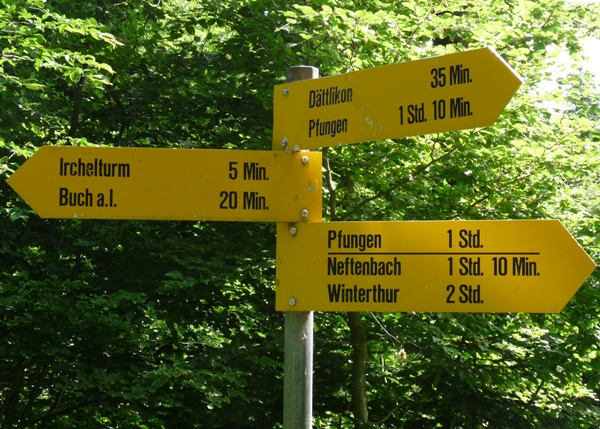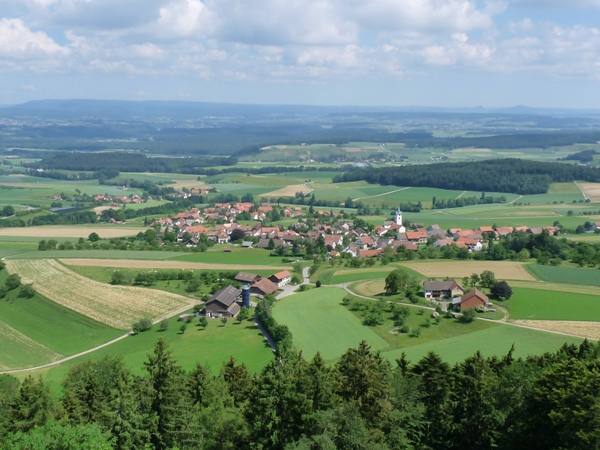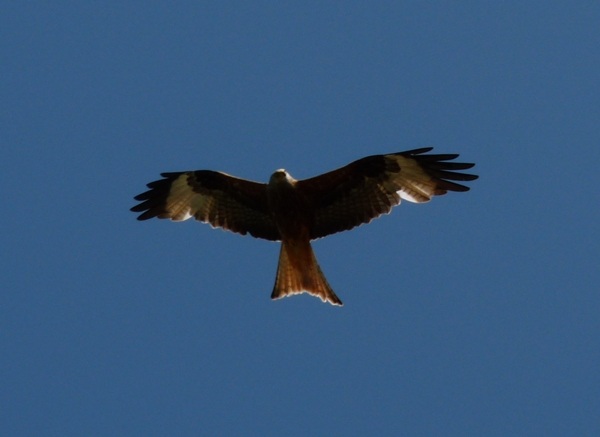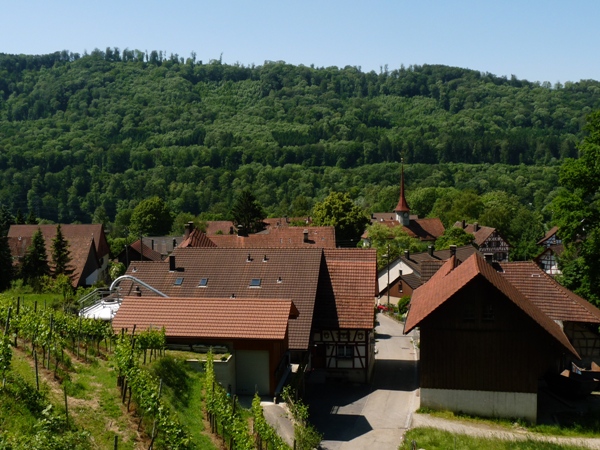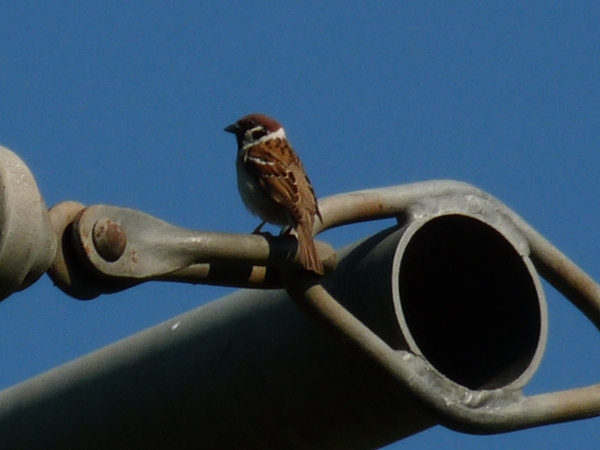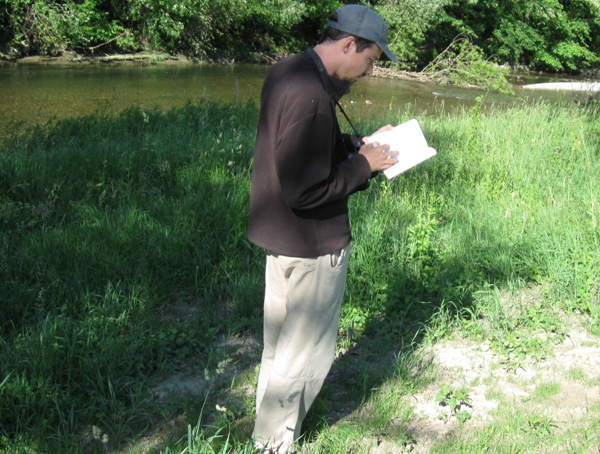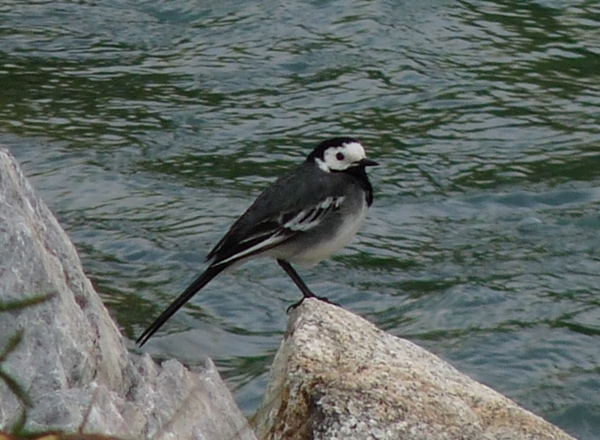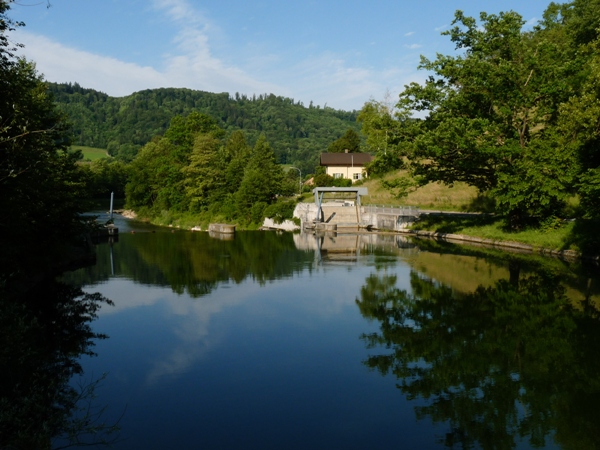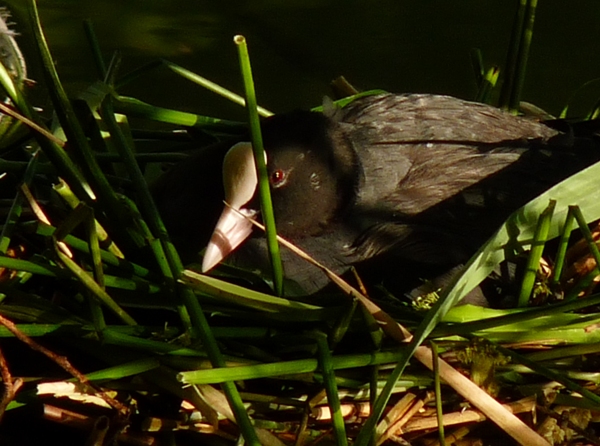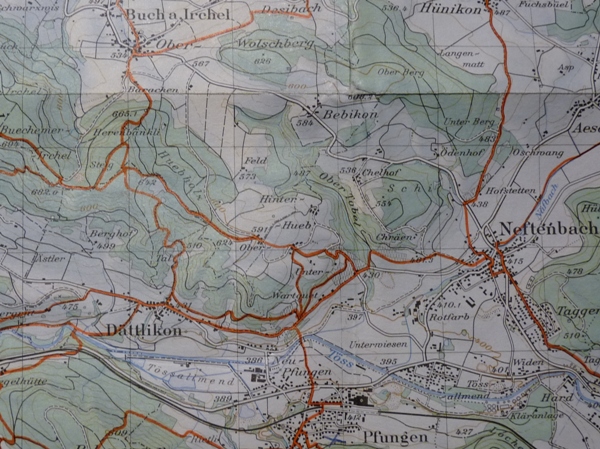|
MIGRATION RESEARCH FOUNDATION |
||||||||||||||||||||||||||||||||||||||||||||||||||||||||||||||||||||||||||||||||||||||||||||||||||||||||||||||||||||||||||||||||||||||||||||||||||||||||||||||||||||||||||||||||||||||||||||||||||||||||||||||||||||||||||||||||||||||||||||||||||||||||||||||||||||||||||||||
I have been participating in the Baillie Birdathon annually for over a decade, and during that time have covered a lot of ground in Ontario, Quebec, and most recently Alberta in search of interesting birds on the day of the count. My 2009 Birdathon was a departure from the norm in two significant ways. Following the lead set by the McGill Bird Observatory team last year (and again this spring), I decided to do a "green" Birdathon, limiting myself to observations I could make just by traveling on foot. But to make the challenge even greater, I chose a very unfamiliar starting point ... Dättlikon, Switzerland. The rules of the Birdathon are that the count must be done within a single 24-hour period, but can take place anywhere in the world. Previously I had never attempted it outside Canada, but with a family reunion scheduled in Switzerland for late May, I thought I would take the opportunity to reacquaint myself with the neighbourhood where my mom grew up and discover the local birds at the same time - with the added benefit of having her along as a second observer and navigator for most of the day. My last visit to the area had been 15 years earlier, so while I had seen many of the common birds previously, so much time had elapsed that for practical purposes I needed to learn them all from scratch again.
As usual, I began my Birdathon early in the morning to take advantage of the peak of bird song - though admittedly in this case that proved more confusing than enlightening since I wasn't yet familiar with most of the European bird songs! But the birds were also active enough that a good number made themselves visible, and so the first 15 species came easily within the first half hour.
Walking along the river produced a number of additional sightings, including the first of many Great and Blue Tits - the European counterparts of North America's chickadees. We also had a very fortuitous encounter with a Sparrowhawk lurking in a dense bush, its presence betrayed only by the scolding of a couple of those Great Tits. However, the rushing water made it difficult to hear, so after a while it made more sense to shift to a parallel path a bit further away from the river, and closer instead to the adjacent wetland reserve.
The Naturschutzgebiet Cholschwärziweiher is a large man-made pond parallel to the river, separated just by a relatively narrow berm. Including a couple of reed-rimmed islands and with mature forest along two sides, it provides great habitat for a variety of wetland species that I otherwise would have had no chance of seeing anywhere else nearby.
I had scouted the wetlands briefly the day before while taking an exploratory wander around to shake off the effects of jet lag, and had been impressed by the number of waterfowl present ... and puzzled by some of the vociferous singers hiding in the reeds. Fortunately, all of the ducks, grebes, and coots were present again for the count, and this time the Reed Warblers popped out briefly to reveal their identities - clearly a case where name and habitat have been well matched.
Beyond the main pond, one path continued to a second more hidden pond, which turned out to be absolutely infested with frogs that were generating quite a cacophony - an interesting enough experience in itself, but like the river earlier it made hearing birds difficult, and the only species added at this stop was Little Grebe. However, it was a most welcome sight, as it is quite an uncommon and local breeder in this part of Switzerland (and adorably tiny too).
From there, it was back to the river briefly, and then "home" to take a pause for breakfast. The first loop ended up being a bit over 2 hours in duration, and generated 27 species - certainly a low count compared to past Birdathon attempts, but quite good given the circumstances.
The ascent through the forest was both productive and frustrating. Some new species were added with ease - Eurasian Jay and Woodpigeon were both large, conspicous, and unmistakable birds. Others, such as Blackcap and Garden Warbler sang their hearts out in multiple locations, but required considerable patience to eventually track down and identify. While searching for one of them, I happened to spot a Hawfinch high in a large beech tree - lucky, as it was silent, and a species I had long searched for without success. A similar stroke of good fortune yielded Eurasian Nuthatch, another life bird.However, to balance out those good finds, there were also a few others that managed to remain fully hidden despite vocalizing persistently. Several days later I was able to match up the vocalizations of two of those (Wood Warbler and Spotted Flycatcher), so I've included those in my count for the day - but at least a couple of others will always remain mysteries.
Having made it to the modest 'summit' of the Irchel, the logical next step was to climb the tower for a better view of the surroundings. It was too windy up there to hear any birds in the canopy below, but the effort was still worthwhile for the view.
The only birds visible from the tower were Red Kites soaring off to the east. Although endangered in part of their range, they seem to be thriving in this region of Switzerland, and were by far the most frequently encountered raptor during my Birdathon. They are large but elegant birds that seem to delight in playing in the wind (and effortlessly avoiding the taunts of Carrion Crows ... the species may be different, but the patterns of behaviour are very similar to interactions commonly seen in North America between large raptors and American Crows).
Heading back down through the woods, we added a few more species, including the tiny Goldcrest (rather similar to the North American Golden-crowned Kinglet), Song Thrush, and a Eurasian Treecreeper to go along with the Short-toed Treecreeper found earlier in the day (the two species are infernally similar in appearance, but fortunately show some separation by habitat and were both singing). By this point, we had been wandering for over 3 hours, and headed back in for a lunch break. Counting the two species that were heard only and identified later, the total count by noon was 45. Glancing out the window during lunch yielded the first of many Swifts seen during the afternoon, plus a soaring Common Buzzard, the fourth raptor species of the day.
Over the course of the day, I spotted only seven species that are also found in North America - Rock Pigeon, Starling, and House Sparrow (these as a result of introductions from Europe), and also Mallard, Barn Swallow, (Winter) Wren, and arguably Tufted Duck (though it generally occurs only as a winter migrant from Europe). Most of these behaved 'normally' in that their behaviour, habitat selection, and (for some species) vocalizations were close to what I'm accustomed to in North America. The Winter Wren was a notable exception though - whereas in North America it's a relatively uncommon bird most associated with large old conifer forests, in Switzerland it appears to be much more widespread and abundant, and seemed to have a rather different song too ... so even the familiar birds were a challenge at times!
My previous Birdathons in Canada have usually relied on a substantial number of warblers and/or sparrows to contribute significantly to the total count, often a dozen or more of each, plus just as many waterfowl. Here it was quite a different story - warblers were as usual the group with the largest count of species (in this case 6), but the European warblers are quite different from the North American wood warblers. The five thrush species seen would not be far off the average for a Canadian count, but in this case was good enough for a tie for second place. However, whereas almost all counts were lower this year than usual (largely because of the limited travel), a notable exception to this rule was the tits - at most I've seen two chickadee species in a day on past Birdathons (almost always just one), but here there were five! Great and Blue Tits were both among the most common birds throughout the day, while Coal and Marsh Tits were more local in the larger forests. One of the highlights of the day though was stumbling across a family group of pink-and-brown Long-tailed Tits, a species I had only once previously glimpsed briefly.
Over the course of the day, sightings of various species did bring back recollections of past encounters. Whereas I spotted some birds for the first time ever during the Birdathon, it seemed to me that others were scarcer than I remembered them being 15 years ago. This was especially true of the finches (Greenfinches and Serin in particular) and wagtails. Whether there's anything to that anecdotal impression or not I don't know. Whereas my Birdathons in Canada have usually coincided with the peak of spring migration, I found that in this case many of the birds I was seeing were already breeding - or had in fact already successfully raised a first brood! In addition to a couple of broods of Mallards, the family of Long-tailed Tits, and the incubating Coot shown above, I also found nests of Eurasian Kestrel, House Martin, Fieldfare, Blue Tit, Great Tit, and Common Magpie, and saw recently fledged Robins and Starlings.
And so I wrapped up my first attempt at a self-propelled Birdathon with an even 50 species, at the low end of the 50-60 species I had been hoping for. However, there were no particularly obvious misses, and between my learning curve with these unfamiliar species, the limited area that could be covered on foot within a day, and the many highlights observed along the way, I was anything but disappointed with the result. Sure, last year I had reached double that total within the first 5 hours of my Birdathon, but this year's result was in other ways just as satisfying. I'm already curious as to what I'll tackle for next year's event! This year's final list is posted below; since it's so much shorter than usual, I've beefed it up a bit by including the German names for all species observed. If you've already contributed to my Birdathon this year, thank you so much for your support! Once again, we're counting on Birdathon proceeds to contribute significantly to our continued operation of migration monitoring programs at McGill Bird Observatory, where we are now in our fifth full year of operation and trying to maintain consistent coverage from year to year so that we can detect population trends over time. Also, proceeds will help support the new phase of Short-eared Owl research begun this past winter. In case you didn't make a pledge in advance of my count, but would still like to support this year's Birdathon, it's not too late to make a flat-rate donation online. Thank you all!
Switzerland Birdathon, May 29, 2009 --- List of 50 bird species seen and/or heard
|

